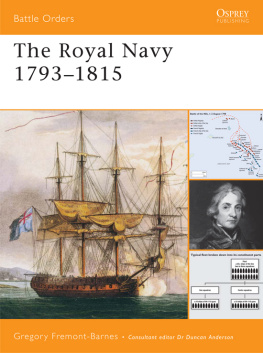ONTARIO SERIES
V
THE TOWN OF YORK 1793-1815

LIEUTENANT GOVERNOR JOHN GRAVES SIMCOE, BY JEAN LAURENT MOSNIER . [Toronto Public Library.]
THE TOWN OF YORK 1793-1815
A Collection of Documents of Early Toronto
Edited with an introduction by
Edith G. Firth

All rights reserved
SCHOLARLY REPRINT SERIES
ISBN 0-8020-7031-0
LC 62-4422
FOREWORD
T HE log houses and fortified embankments of Old Fort York, now a popular tourist attraction, are about all that remains in the immediate Toronto area of the physical assets of the late eighteenth century. In this fifth book of the Champlain Societys Ontario Series, the editor and author has compiled a fascinating documentary history to show how primitive York began to assume the characteristics of modern Toronto.
Miss Edith Firth, head of the Canadian history and manuscripts section of the Toronto Public Library, has searched deeply into the old records for her book The Town of York, framing it within the period of Simcoes arrival in 1793 and the time the news of peace reached York in the spring of 1815. In this factual book, which I am confident will be of interest to both layman and student alike, an attempt is made to show why York was chosen for settlement in the first place, the kind of community that was developing, and the effect of the War of 1812 on its social, religious, and business structure. The problems of defence, commercial development, local government, administration of justice, communications, politics, religion, and education are illustrated through contemporary documents.
York was a hot-house community, forced ahead of its natural growth by its importance and social position as a capital. Nevertheless, it lagged behind Kingston at this time, because of Kingstons commercial prosperity and pre-eminence as the military and naval centre of the province. The War of 1812 made an integral community out of such diverse elements as senior civil servants, who tried to live the leisurely life of their counterparts in England; the merchant class, who were mainly Scottish immigrants; and the tradesmen and labourers, who were mainly discharged soldiers from the British Army and arrivals from the United States. By 1815, many of the characteristics of present-day Toronto were beginning to show through the rough exterior of the pioneer town.
Our purpose in this Ontario historical series is not to interpret history, but rather to record itto provide a solid foundation of source material for an interpretive historian and, at the same time, to sketch a detailed picture of the frontier age for the general reader.
Ontario has a rich, colourful heritage which is in danger of being lost to future generations unless preserved in readable book form. It is our hope that many of Ontarios historical records, existing only in manuscript form in private homes and offices, will be brought to light in the future works of this series.
Ours is a co-operative undertaking shared by the Ontario government and the Champlain Society, which has been directing the production of historical studies for more than 50 years. The Society chooses and guides the editors of the various works and the government defrays the cost of preparation and publication.
Since the first book of this series, The Valley of the Trent, was published in 1957, our aim has been to publish one volume each year. We now have on our bookshelves volumes on Royal Fort Frontenac, Kingston Before the War of 1812, and The Windsor Border Region. Under preparation are volumes about the early histories of the Muskoka-Haliburton region and the Valley of the Grand River.
Only by knowing our past may we advance with wisdom and knowledge into the future, and I take this opportunity of thanking Miss Firth for her contribution in helping add another page in the history book of Ontario.
J OHN P. R OBARTS
Prime Minister of Ontario
London and Toronto
Nov. 27, 1961
PREFACE
O N AUGUST 26, 1793, an Indian chief before a council of his people held at the site of Toronto said, We earnestly hope that the great man now here will rekindle the fire that the chimney may be strong, that it may never be extinguished. The earlier fire which had been lit by the French in the first quarter of the eighteenth century had indeed gone out, but the great man, Lieutenant Governor Simcoe, succeeded, as the chief had hoped, in building a strong chimney. The fire has never been extinguished.
Modern Toronto really began in that summer of 1793 when Simcoe and the Queens Rangers started to plan and build a town on the shores of Toronto Bay. The earlier Indian and French settlements had no influence on the development of the present city, nor did the abortive plans of Lord Dorchester affect its later history. This volume, therefore, begins with Simcoes arrival at Toronto, and records the development of the town of York from that time to the end of the War of 1812. The final date was chosen because York entered a new stage in its growth after the war, when the heavy post-Napoleonic immigration brought major changes and greater complexities to every aspect of life in the community. Although the period covered in this book is thus a comparatively short one, it includes Torontos formative years.
A number of the documents in this collection have already been printed in the published correspondence of Simcoe and Russell, in the reports of the Public Archives of Canada and the Department of Public Records and Archives of the Province of Ontario, and in other historical works. This re-publication has been unavoidable if a complete picture of the development of York was to be presented. Except where indicated, the transcriptions in this volume are from the original manuscript sources, and may vary slightly from earlier printed versions. An effort has been made, however, to include as much unpublished material as possible. The Introduction and Documents are divided into topical groups lettered from A to H. The final section, I, includes documents concerning military, economic, cultural, and social activities and conditions during the War of 1812. Within each group the documents are arranged in chronological order.
The editor is extremely grateful to Dr. W. Kaye Lamb and the staff of the Public Archives of Canada for their unfailing patience and practical help. This same assistance was cordially given by Dr. George W. Spragge and the staff of the Department of Public Records and Archives of Ontario, and by the staffs of the Archives of the United Church of Canada, Toronto; the Department of Lands and Forests of Ontario; the Douglas Library, Queens University; the Royal Canadian Military Institute, Toronto; the Synod of Ontario Archives, Kingston; the Burton Historical Collection at the Detroit Public Library; the Historical Society of Pennsylvania, Philadelphia; the New York Historical Society, New York; and the William L. Clements Library, University of Michigan.
To the Toronto Public Library the editor owes a special debt. A leave of absence was kindly granted by the Board for work on this volume. Much is owing to the sympathy and understanding of the Chief Librarian, Mr. H. C. Campbell, and to the tolerance of fellow staff members with the enthusiasms and depressions that inevitably accompanied the work. To former members of the staff who were responsible for gathering together the Librarys collection of Canadiana, every student of the area and period must be grateful.








